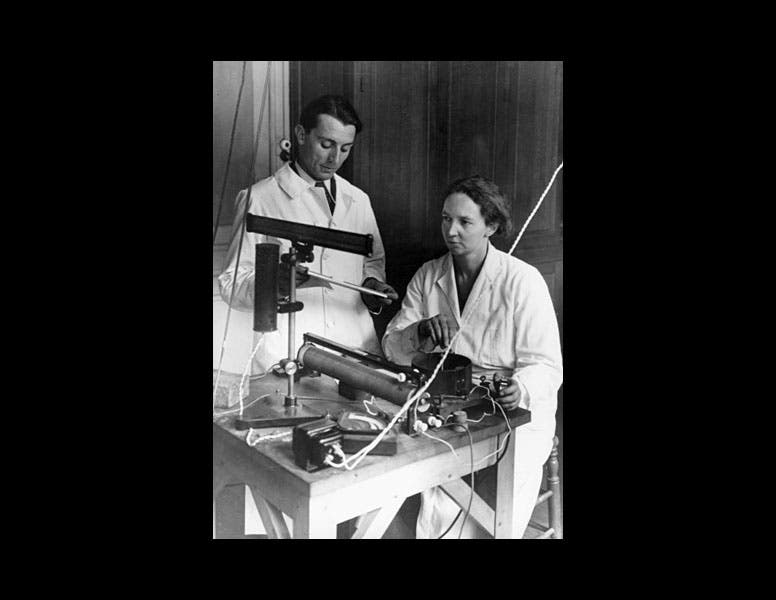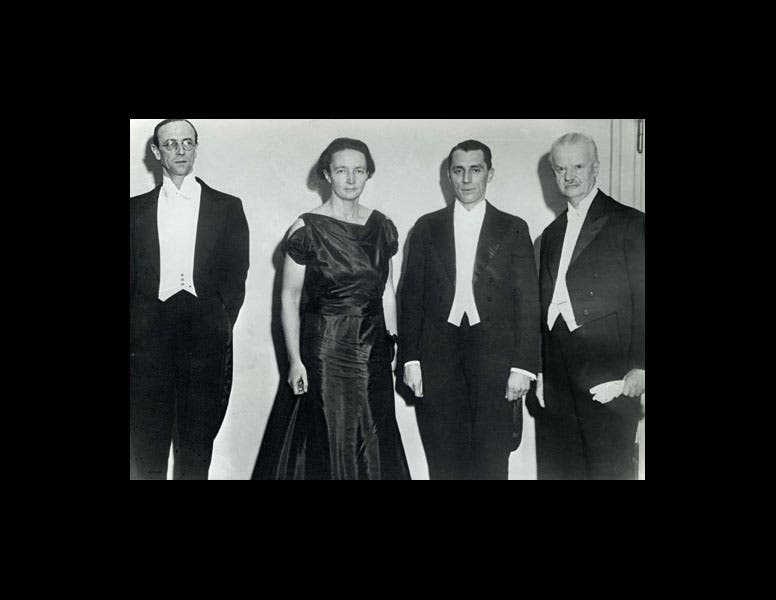Scientist of the Day - Frédéric Joliot-Curie
Jean Frédéric Joliot, a French radiochemist, was born Mar. 19, 1900. In 1925, Joliot joined the lab of Marie Curie in Paris, where he met Marie's oldest daughter, Irène. The two were married in 1926 and took the joint name Joliot-Curie. Together they pursued research in the study of radioactivity, and in 1934, they produced the world's first artifically radioactive elements. They bombarded boron, aluminum, and magnesium with neutrons and created new isotopes of nitrogen, phosphorus, and silicon which were radioactive. Radioactivity was just beginning to be used for treatment in medicine, and the Joliot-Curie discovery made it possible to create such isotopes quickly and easily in the laboratory. It was immediately recognized as a significant achievement, and in 1935, they were jointly awarded the Nobel Prize in Chemistry, in what was surely the speediest Nobel Prize ever awarded in the sciences. We have the 1934 paper that led to the Prize in our serials collection; it is in the Journal des Physiques et le Radium, and it is one of the many journals that we acquired along with the rest of the Engineering Societies Libraries in 1995.
When Albert Einstein wrote his famous letter to President Roosevelt on Aug. 2, 1939, warning of the dangers of nuclear weapons, he mentioned three scientists whose work had demonstrated the potential of a nuclear chain reaction: Enrico Fermi and Leo Szilard in America, and Joliot in France.
The photos above of Frédéric and Irène in the laboratory, and then receiving their Nobel awards, were both taken in 1935.
Dr. William B. Ashworth, Jr., Consultant for the History of Science, Linda Hall Library and Associate Professor, Department of History, University of Missouri-Kansas City. Comments or corrections are welcome; please direct to ashworthw@umkc.edu.









